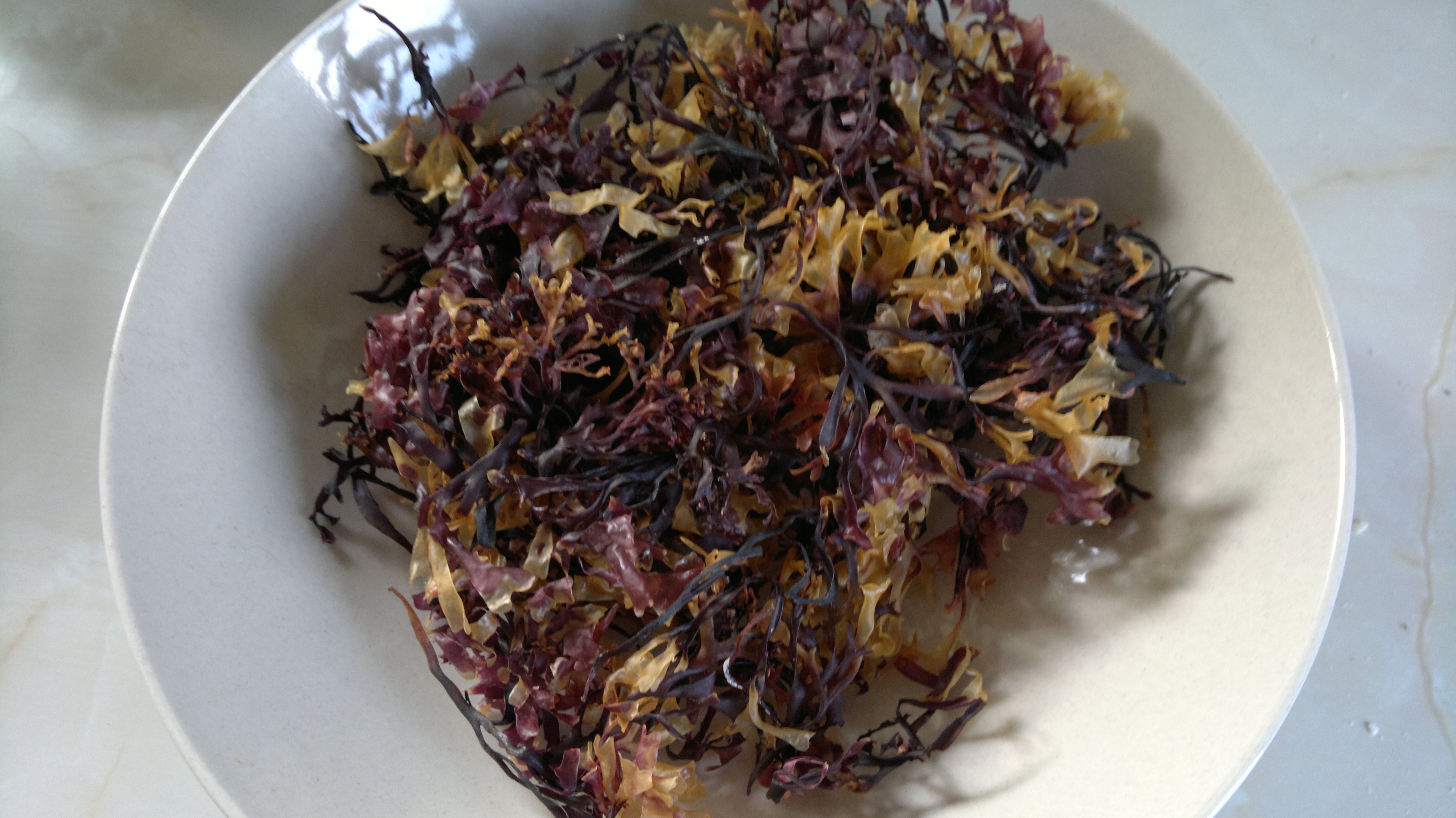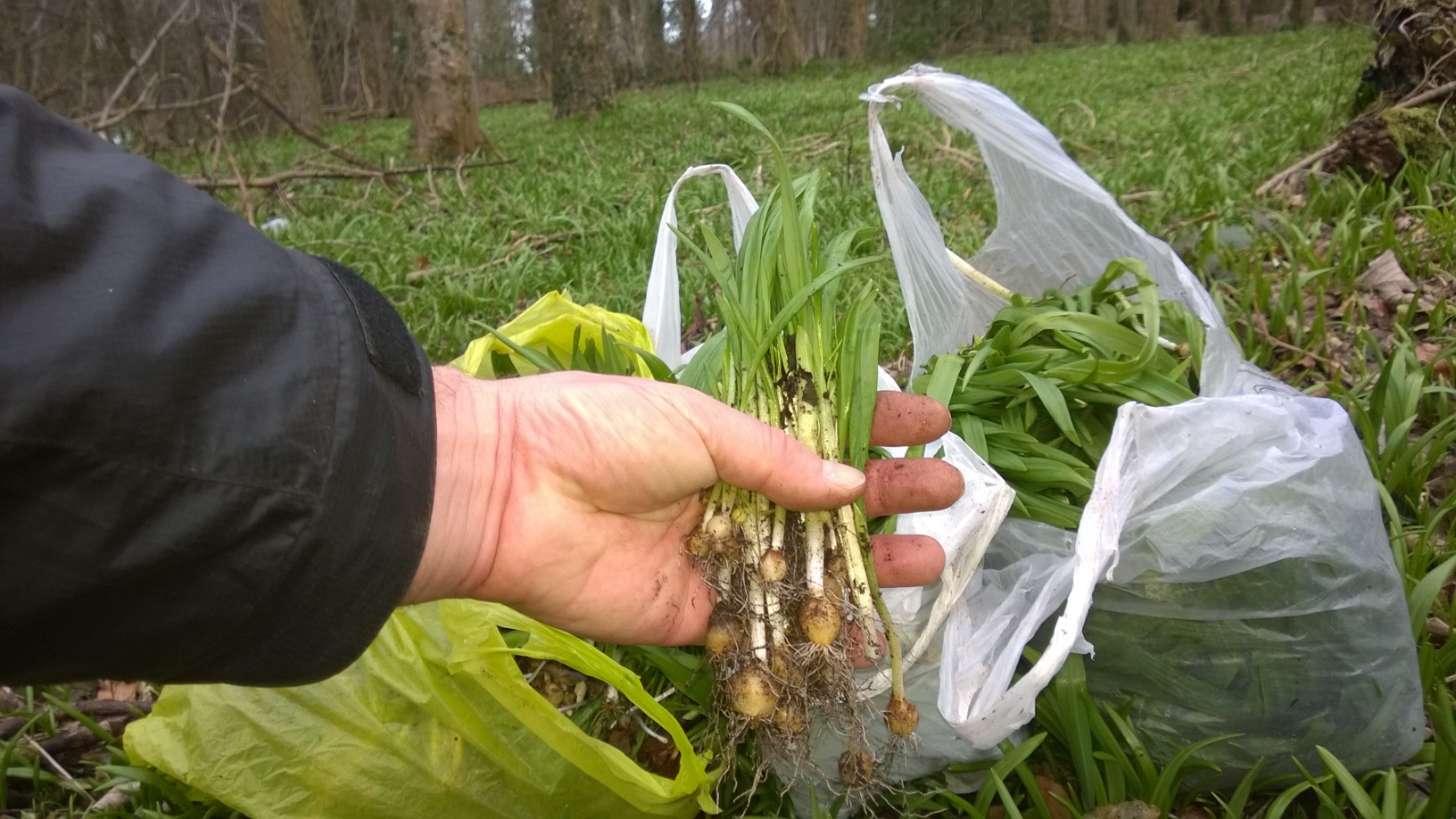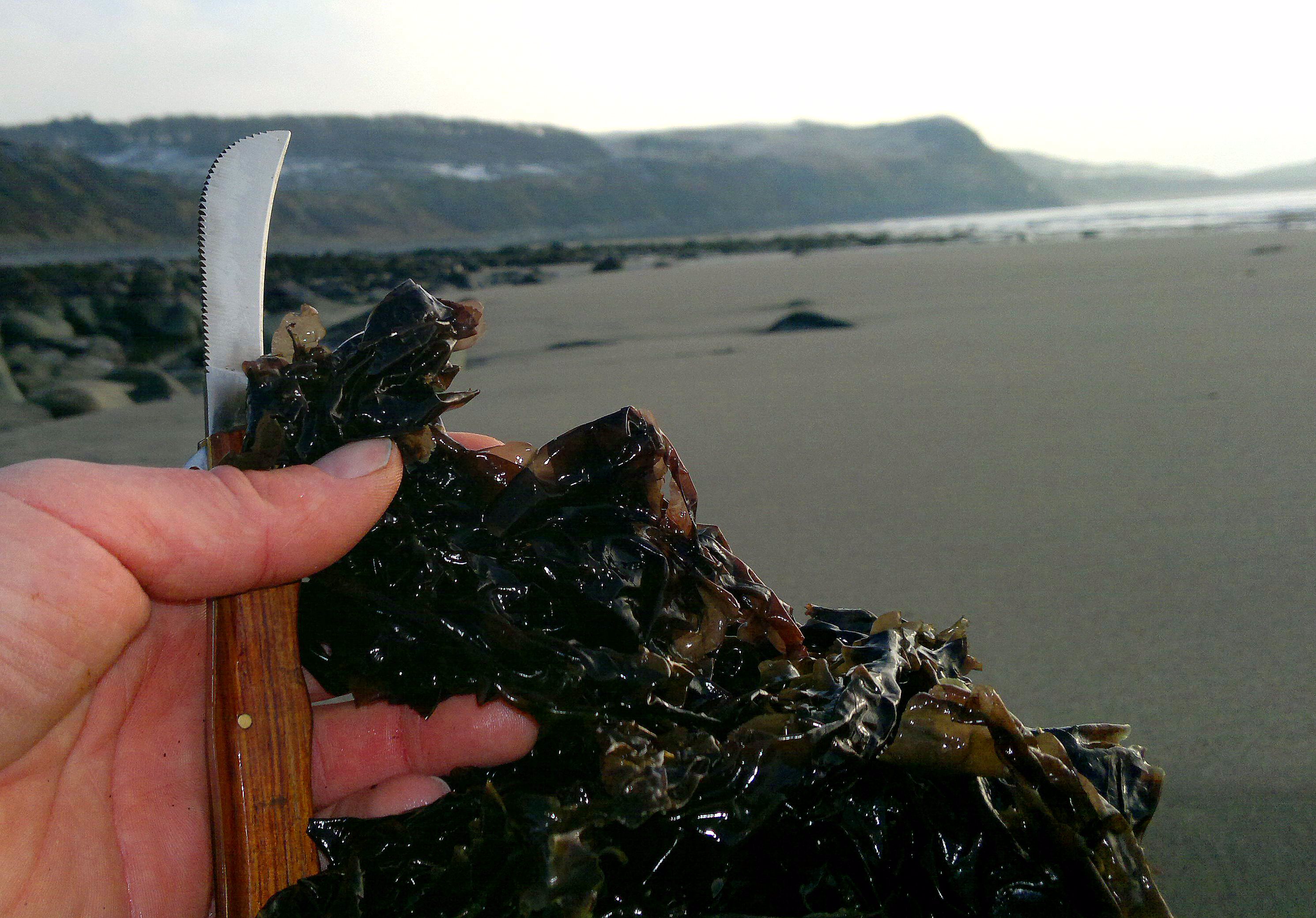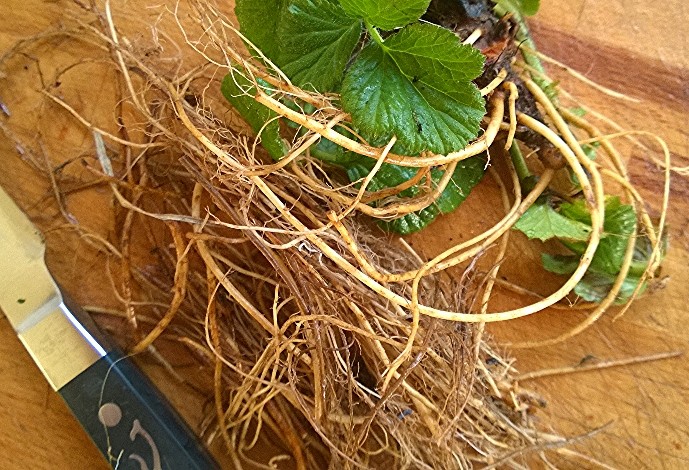Sea spaghetti – Identification, Edibility, Distribution
February 8, 2016
A very distinctive and tasty seaweed – up to 2m long yellowy brown spaghetti-like fronds, dividing near the base, growing from small, button-like holdfasts.

A very distinctive and tasty seaweed – up to 2m long yellowy brown spaghetti-like fronds, dividing near the base, growing from small, button-like holdfasts.

Caragheen is not a seaweed to eat in the conventional sense – its far too tough, even when cooked. But once heated in water it exudes a gelatinous flavourless substance that can be used to thicken soups and stews, or in higher concentrations, set jellies or panna cottas. It also can be boiled with other flavourings to make a rich, nourishing tea…

If you come across a plant that reminds you of wild garlic, but has narrower leaves and less of a garlic smell, you may have found wild leeks. These aren’t the hulking great Frankenstein leeks you might expect to find in shops and gardens, but something tender and elegant…

Laver has no great flavour of its own, but imparts a rich, savoury, umami quality to anything it is added to. I have not found a single savoury dish that can’t be improved by its addition and it is a cornerstone of my wild larder…

This is a super-common plant of wood edges (and often deeper in the forest where light penetrates) and hedgerows, with a long history of medicinal use. The leaves can be used as a pot-herb in spring and summer but their flavour is unremarkable. The part that commands my attention is the root, which has a distinct flavour of cloves